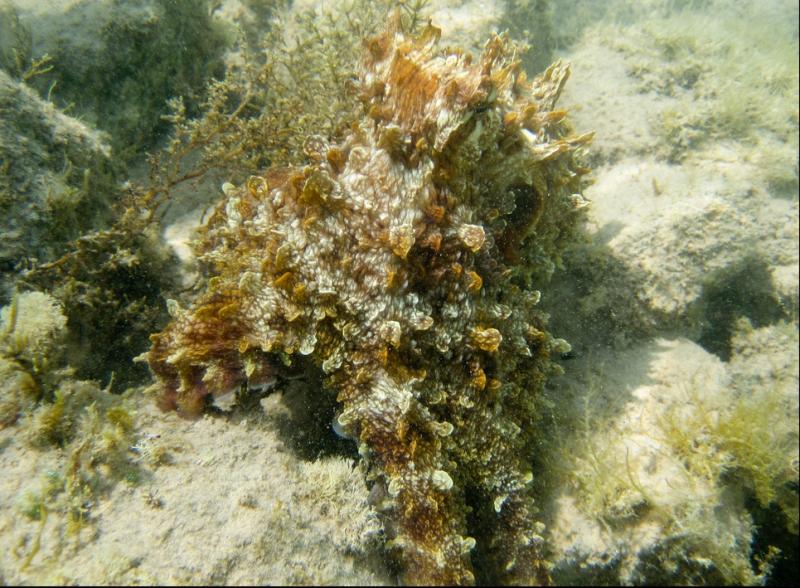Squids, octopuses, and cuttlefishes are among the few animals in the world that can change the color of their skin in the blink of an eye. These cephalopods a group of mollusks with arms attached to their heads—can change their skin tone to match their surroundings, rendering them nearly invisible, or alternatively give themselves a pattern that makes them stand out.
Many thousands of color-changing cells called chromatophores just below the surface of the skin are responsible for these remarkable transformations. The center of each chromatophore contains an elastic sac full of pigment, rather like a tiny balloon, which may be colored black, brown, orange, red or yellow. If you stretched a dye-filled balloon, the color would gather in one spot, stretching out the surface and making the color appear brighter—and this is the same way chromatophores work. A complex array of nerves and muscles controls whether the sac is expanded or contracted and, when the sac expands, the color is more visible Besides chromatophores, some cephalopods also have iridophores and leucophores. Iridophores have stacks of reflecting plates that create iridescent greens, blues, silvers and golds, while leucophores mirror back the colors of the environment, making the animal less conspicuous.
The most obvious reason such a soft-bodied animal would change color is to hide from predators—and octopuses are very good at this. They can change not only their coloring, but also the texture of their skin to match rocks, corals and other items nearby. They do this by controlling the size of projections on their ski (called papillae), creating textures ranging from small bumps to tall spikes. The result is a disguise that makes them nearly invisible; can you even see the octopus in the video above? Color changing is just one tool in an octopus’s arsenal of defenses, however; it can also spray ink, and make a quick escape through any hole it can get its hidden bony beak through.
The Mimic Octopus (Thaumoctopus mimicus) has a unique way of camouflaging. Rather than blending in with the seafloor, it changes its skin color and how it moves its tentacles to take on the shape of other sea creatures. It has been known to impersonate more than 15 different marine species, including flounders, lionfish, and sea snakes.
Octopuses and cuttlefish also use color change to warn their predators or any animals that threaten them. One of the best examples is the extremely venomous blue-ringed octopus (Hapalochlaena lunulat), which lives in tide pools in the Pacific and Indian Oceans from Japan to Australia. When these small octopuses are provoked, iridescent blue rings surrounding dark brown patches appear all over their bodies. Despite its beauty, this reaction means, “If you touch me you will most likely get hurt!”
Cephalopods can also use chromatophores to communicate with one another. Male Caribbean reef squid (Sepioteuthis sepioide) turn red to attract females and white to repel other males—and can even split the coloration of their bodies down the middle to attract a female on one side and repel a male on the other! The Humboldt Squid (Dosidicus giga), also called the “Jumbo Squid” and the “Red Devil,” is known for its flashing colors. This flashing is suspected to be a means of communication—but no one knows what the squid are trying to say.
No wonder cephalopods are sometimes called chameleons of the sea!









No comments:
Post a Comment